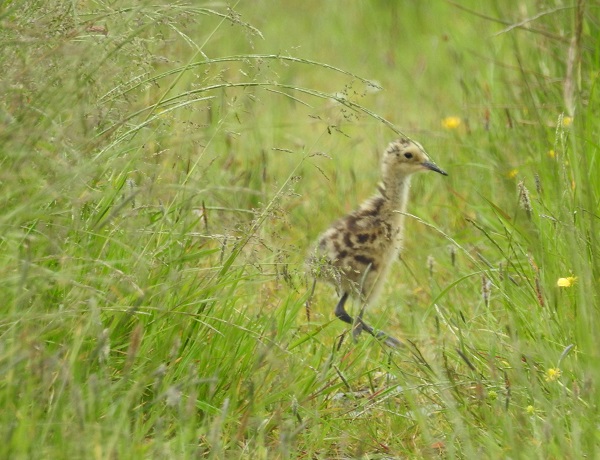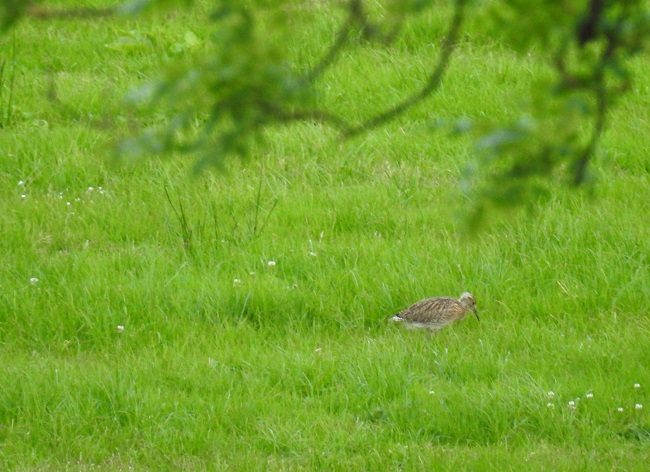Curlew Conservation Programme Update August 2017
2017 has seen a whirlwind of action for Curlew in Ireland. The Curlew Task Force, independently chaired by Alan Lauder has been established and the Curlew Conservation Programme has also been initiated, putting conservation recommendations into action. Being the first year of coordinated conservation action, it was always going to be a year where a lot was learned. At the end of the day, this is all about numbers – we have in Ireland a breeding population that is in real risk of extinction.
Young Curlew Chick in North Monaghan grassland © Joe Shannon, Curlew Conservation Programme
The numbers that really count now are the number of breeding pairs and the number of young chicks that they fledge.
Below is the situation for Curlew, presented in numbers:
| 124 | breeding pairs found in the first National Breeding Curlew Survey in 2015 and 2016 |
| 97% | decline since the 1980s |
| 6 | areas concentrated on by the Curlew Conservation Programme: Stack’s Mountains (Kerry); Lough Ree; North Roscommon-Leitrim; Monaghan; Donegal; Lough Corrib |
| 14 | seasonal fieldworkers employed directly for Curlew Conservation |
| 68 | pairs previously known in these 6 action areas from the 2015/2016 survey |
| 59 | pairs of breeding Curlew recorded in these areas in 2017 |
| 14 | of these pairs are believed to have reared chicks (results from some sites were inconclusive) |
| 30 | of these pairs are believed to have ‘failed’ in their attempts to rear chicks, with predation the primary cause of failure (results from some sites were inconclusive) |
| 16 | chicks believed to have been reared from 44 nests where breeding outcome was determined |
| 0.32 | chicks per nest; an unsustainably low breeding productivity |
The same Curlew Chick some weeks later, near fledging stage © Joe Shannon, Curlew Conservation Programme
The clock is ticking for Curlew in Ireland – to save this species and stem the losses will be a mammoth task involving many stakeholders, most importantly Government, local landowners and nest protection efforts working closely together. Already the Green-low Carbon Agri-Environment Scheme (GLAS) administered by the Department of Agriculture, Food & the Marine is encouraging a number of farmers where Curlew are present, to farm in a Curlew-friendly way. Further works are now needed to build on this and make a telling difference.
Efforts are currently focussing on designing habitat enhancement works, in agreement with landowners where Curlew were recorded to breed in 2017. It is hoped that this can at least in some way go towards providing better conditions for breeding Curlew in the spring and summer of 2018 and beyond.
The National Parks & Wildlife Service would like to take this opportunity to thank all that were involved in efforts this spring and summer to help breeding Curlew, in particular the local Curlew Action Teams. The Curlew Task Force is due to meet in the final quarter of 2017 to discuss the outcomes and learnings from the 2017 breeding season and to review progress on recommendations aimed towards saving the Curlew in Ireland.


